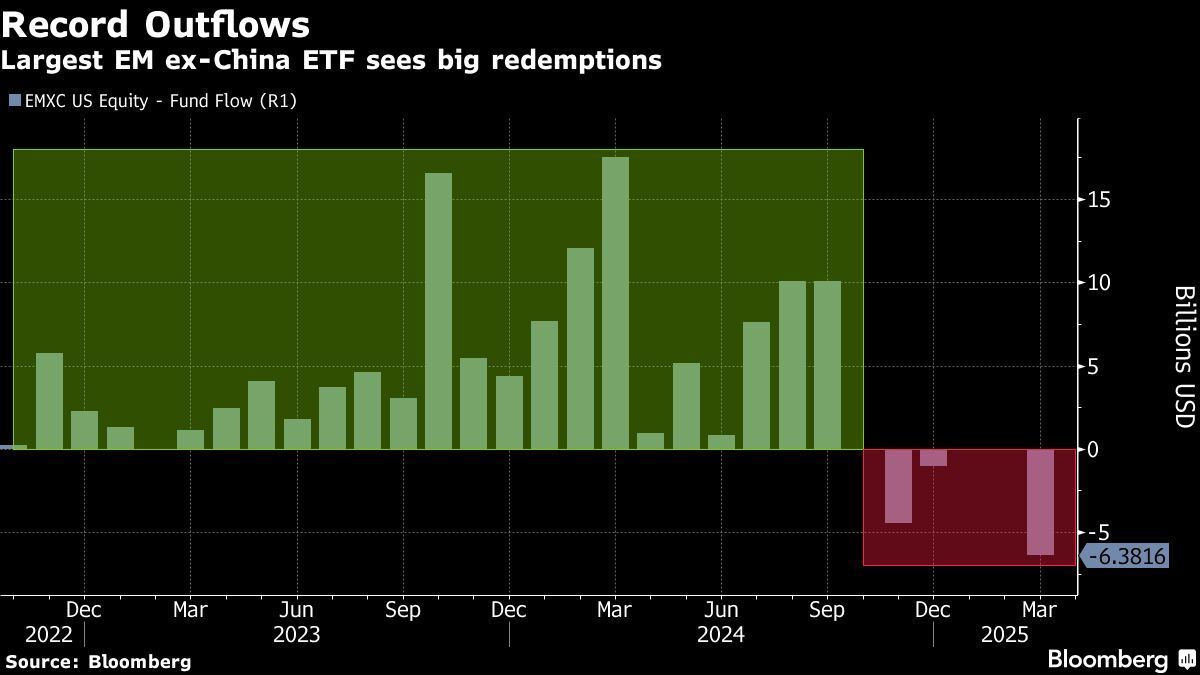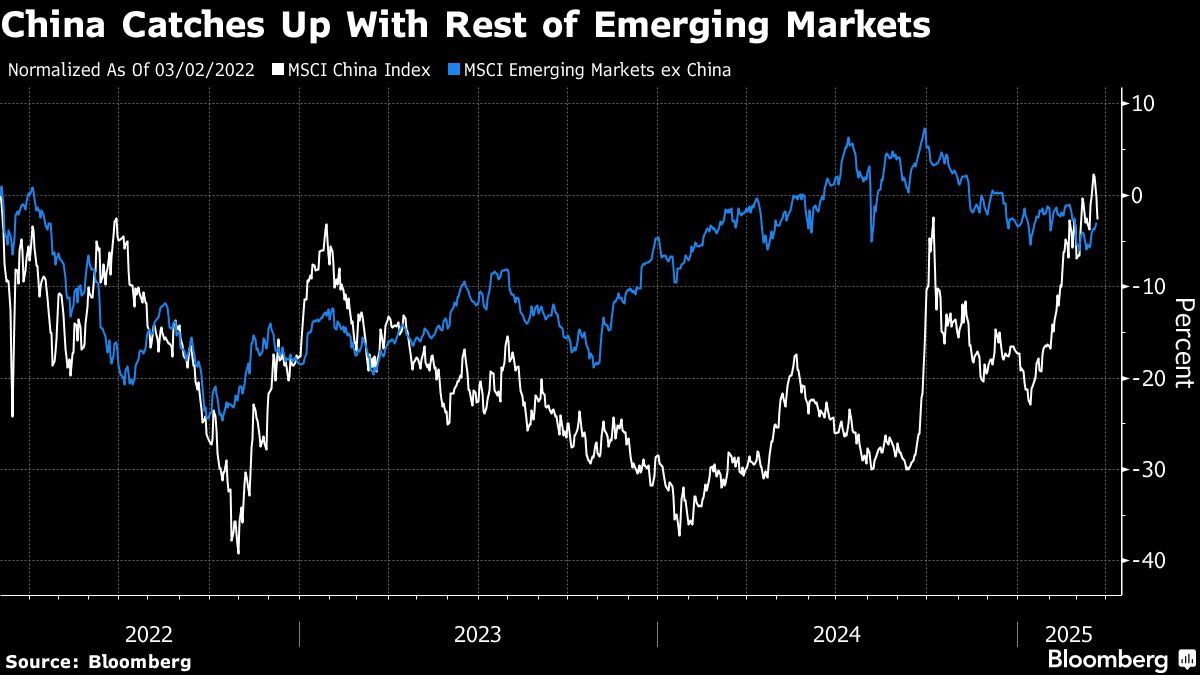
The largest emerging markets ex-China ETF saw record redemptions last week — leaving it on track for one of the few monthly outflows since 2022.
(March 26): One of the most popular ETFs in emerging markets is quickly falling out of favour after a stellar two-year run as investors reassess the outlook amid global growth concerns and simmering trade tensions.
The largest emerging markets ex-China ETF saw record redemptions last week — leaving it on track for one of the few monthly outflows since 2022. It’s an abrupt change for investors who had been piling in for 24 straight months, fuelling a 745% surge in the fund’s assets, according to data compiled by Bloomberg.
Chinese markets have underperformed for years amid lingering questions about the country’s ability to deliver growth and geopolitical tension with the US. The disappointing returns led to a boom in ex-China ETFs, offering emerging-market investors ways to capitalise on gains in markets including India. But now, Beijing’s fresh stimulus push, coupled with optimism about Chinese AI development, is luring money managers back into ETFs that buy Chinese stocks.
“Despite ongoing geopolitical frictions, China’s latest AI [artificial intelligence] strides have upended the ‘China-last’ narrative, reaffirming its dominance as a key player in emerging markets,” said Sylvia Jablonski, the chief executive officer of Defiance ETFs. “For investors, ignoring this level of innovation means leaving a seismic shift in global tech on the table.”
Chinese stocks have been on a volatile stretch. A stimulus blitz in late September spurred local shares to jump almost 40% in three weeks, before fading towards the end of last year amid disappointment over the lack of further policy support. The rally has resumed since mid-January as the emergence of DeepSeek’s AI tool ignited optimism toward China’s growing clout in the tech sector.
The revival also comes as investors look for cheaper alternatives to the equity market in the US where the so-called magnificent seven lose steam and back and forth on US tariff policies rattles the outlook for the world’s largest economy.
The MSCI China Index returned 39% over the past 12 months, handily beating the 1.7% gain in the MSCI ex-China index and the 9% increase in the broad EM benchmark. The S&P 500 is up nearly 11% in the span.
Total assets held in the iShares MSCI Emerging Markets ex-China ETF have dropped 16% from a peak in September. By comparison, the market value of the iShares MSCI China ETF has increased by about 30% over the same period despite volatility.
“There is still a decent amount of money that believes China is uninvestable, but for the rest I think it will be more of a cyclical play,” said Greg Lesko, a money manager with Deltec Asset Management in New York. Lesko’s firm has reduced its underweight position in China recently due to state support for the private sector, he added.
To be sure, some of the structural tailwinds behind the rise of EM ex-China strategy remain in place, including China’s on-going tensions with the US. Calling Beijing a “foreign adversary,” the Donald Trump administration has rolled out a memorandum seeking to curb Chinese spending on tech, energy and other strategic sectors in the US, as well as increase the scrutiny over US investments in Chinese companies.
Last year marked a record for ex-China ETF launches from firms ranging from State Street Global Advisors to boutique shops like Avantis Investors and Polen Capital Investment Funds. At the same time, it saw about 20 China-specific ETF closures — representing roughly 10% of all US-listed ETF shutdowns throughout the year.
The “structural demand” for the so-called ex-China trade is still there, but it will ebb and flow depending on the market performance, said Jerry Wu a fund manager at Polar Capital LLP. The London-based investment firm launched its own EM ex-China mutual fund in 2023, in addition to its existing emerging-market and China strategies.
“At the end of the day, it’s where the performance is,” said Wu. “But for the next five to 10 years, we are still in the camp that think the best way to benefit from the emerging market growth story should still be including China in the broader EM approach.”
Uploaded by Felyx Teoh
- Making a bold move in Kota Kinabalu
- Ukraine to seek more US investments in talks over economic deal — Bloomberg
- Businessman with 'Tan Sri' title, said to be O&G industry veteran, arrested for RM10m scam
- Indonesian Muslims to celebrate Eid on Monday
- Myanmar hit by fresh 5.1 aftershock, tremors felt in neighbouring countries


